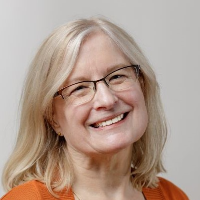“No one needs to die in pain.”
That is what the social worker told me as I signed the papers that would put my father on hospice care. That is the mantra of hospice providers. As a family caregiver entering the new and scary realm of end-of-life-care, it became my mantra, too. I had no choice but to believe these words since my dad had already suffered so much, especially in the weeks leading up to this decision.
Each time I walked into Dad’s room in the nursing home, he would be rigid in bed, propped up on one elbow and slamming his other fist against his upturned palm. Pow! Pow! Pow! Over and over, he pounded fist against hand. I would try to get him to relax and lie back down, but he couldn’t comprehend my pleas. Pow! Pow! Pow! He was trying to knock out the pain.
Dad had resided in this nursing home since a botched brain surgery that was supposed to correct the results of a brain injury he’d sustained in World War II. He went into this surgery foggy from fluid building up behind scar tissue in his brain. While the procedure was medically successful, the unexpected result was that Dad developed “instant dementia.” He came out of the operating room needing around-the-clock skilled nursing care.
Each time I visited and saw him in such an agitated state, I would hurry from his room back out into the hall to talk with his nurse, Sarita. Had the doctor been in yet? Had he seen Dad like this? Would he please help us get Dad on hospice?
“He is in pain, Sarita. It’s obvious. Can’t the doctor give him something?” I implored.
“I know,” she’d answer solemnly. “He is in pain. We know him and can see it, but the doctor looks at his chart and says he sleeps so much that he can’t possibly be in pain.”
“But look at him!” I’d plead, choking on tears.
“I know,” she’d reassure. “I know. We’re working on it.”
We knew Dad was wearing down. He didn’t have long to live, but did he have to be in such discomfort? I wanted him under hospice care, but the doctor was adamant that he still wasn’t ready.
One day while I was working at my newspaper job, the phone rang. It was the head nurse at Dad’s nursing home.
“Carol, we did it!” she said. “Your father’s going on hospice. Can the provider call you at work? If you can do the paperwork now, then we’ll get him started.”
A hospice social worker called me at work and even came up to my office for the initial interview. I did the paperwork and met the hospice representatives at Dad’s nursing home later that day.
Breaking the News That a Loved One Is Going on Hospice
After we won the fight for hospice, my main concern became how to tell Mom. Hospice means impending death to most people. And, of course, that is what they do—they help people die naturally while minimizing bothersome symptoms (like pain) as much as possible. However, telling my mother that Dad was going on hospice would be difficult. I even asked the social worker if we could “skip that part”! I can’t believe I asked that, but I wanted to spare my mother the emotional pain of knowing that dad was dying. I meant well, but I think I was trying to spare myself some discomfort as well.
One of the great things about hospice providers is that they have heard it all before. I wasn’t made to feel silly or foolish or judged when I made my request. Instead, they gently but firmly declined. They would tell Mom why they were there, and they would do everything in their power to help her cope.
At that point, Dad had been at the nursing home for about a decade. His time there is still a blur in some ways. Years into his stay, my mom joined him at the facility. She also suffered from dementia, although it was a slowly progressing, more “normal” kind (if one can describe dementia as normal). She was also prone to frequent falls due in part to severe arthritis and joint pain. She was frail and only weighed about 85 pounds.
I fretted about how Dad’s decline would affect her. What would this do to Mom, knowing that her husband was dying? The two of them had been living in separate private rooms on the same floor of the nursing home for years. However, we felt they should spend more time together during these last few months, especially since Mom no longer had the mental or physical strength to keep going to visit Dad in his room. So, after all those years apart, they became roommates again.
The hospice social worker informed me that Mom had to be told about Dad’s new care plan and that their pastor would visit with her. They reassured me that they worked with these scenarios all the time. Mom would be sad, but she would be okay. Nonetheless, I was still worried since Mom’s dementia kept her from remembering new information.
Hospice Provides Pain Management at the End of Life
The change in Dad’s behavior after he began receiving comfort care was amazing. My gratitude to our hospice provider is unending. He was given a very small dose of morphine, his breathing became regular and he was finally relaxed. He even smiled with recognition when I went to see him each morning. The hospice pastor and the social workers were excellent with Mom, too. Of course, the nursing staff and CNAs at the nursing home, who knew them both so well, were still part of the care team. They were, as always, exceptional.
It was so obvious to me that Dad was more content and physically comfortable once hospice arrived on scene. When he slept, he slept well. I can’t even remember how long Dad lived with hospice care. Being at the facility had been a normal part of our lives for so long that nothing much really seemed to change except for Dad’s comfort level. He was relaxed for the first time in months. Mom even noticed this and felt better. Our whole family was somewhat relieved. Dad was as close to being himself as his demented mind would let him be.
Of course, his health continued to go downhill during this time. We knew he was dying. Late one day, Sarita called me at work and told me that Dad was declining fast. I called my sister, Beth, and then went straight to the nursing home. Beth drove the 40 miles into town and met me there.
We sat with Mom and then sat with Dad. Beth and I held his hands, touched him, talked to him and then traded places to ensure Mom also had the support she needed. She couldn’t bring herself to sit with him. She wasn’t strong enough and she wasn’t able to fully comprehend what was happening at that point.
The nurse came in to turn Dad and wipe his skin with a damp cloth to keep him clean and comfortable. He seemed to rally some, which I now know is not unusual before death. He seemed stable for a time, so my sister quickly drove back home to take care of her kids and dog. Beth had just gotten on the road when Dad’s nurse abruptly called for me.
I slid next to him in the hospital bed and held him as he slipped into death. For the first time in a decade, I felt my real dad with me. His spirit was finally freed from his body, and I cried out of both grief and joy.
Grief Counseling for Surviving Family Members
One of the worst parts of Dad’s death was that I had to tell Mom over and over that he had died. She could not keep the concept in her mind. Fortunately, the hospice provider’s pastor and grief counselors were there to help Mom cope. The rest of the family could get any help we felt we needed from the organization as well.
Most hospice providers offer individual and family grief counseling, bereavement support groups, written materials on grieving, memorial celebrations and referrals to other resources to help surviving family members process their loss. I strongly encourage fellow caregivers to take advantage of these free resources while coming to terms with the death of a loved one.
Meanwhile, my mom’s physical condition was also deteriorating in the wake of Dad’s death. We believed she had cancer that was spreading from her colon to her bones, but she was much too weak to handle any tests or treatments. Once again, comfort became our only goal.
I talked with the nurses about hospice care for Mom and this time around it was easier to get started. As soon as hospice gave Mom a specialized pain killer for bone cancer, she was pain free. This was the very first time she had been without pain in decades. Gradually, they needed to add morphine. Five months after Dad’s death, Mom died peacefully with Beth and me cheering her on. Hospice brought Mom through to a peaceful, pain-free death.
When to Call Hospice
There are many misconceptions surrounding hospice care. One of the most pervasive myths is that you need to wait until someone is “at death’s door” before you call hospice, but nothing could be further from the truth. Because of this, most people wait too long to call hospice.
For example, I have a friend whose 65-year-old father is dying from prostate cancer. He may live several more months and he isn’t yet in pain. Still, he needs skilled nursing care to help maintain an ostomy and he is very susceptible to infections. He will gradually require more intensive care, including pain management, and I have been encouraging her to call hospice if only to just talk with them. If he isn’t ready yet, then at least she has some answers about how patients “qualify” for hospice care and what their services entail. Still, she is reluctant and afraid she will “jinx” him. What if her dad gets better?
Fantastic, I say! People have been known to go on and off hospice several times. That happened to the elderly mother of another of my friends. She began receiving hospice care until her condition improved and she “graduated” from hospice. She went through this admission and discharge cycle twice without any problems. These care providers are extremely accommodating. Eventually, she died peacefully under their care. It was worth it.
Many people also think that hospice workers will only provide services in people’s private homes. They do go to homes: homes of all kinds. They can arrange for volunteers to sit with the sick person in his or her home. They can arrange to deliver hospital equipment if it’s needed to improve their comfort level and quality of life. With my parents, hospice also helped them both die at home. Their home just happened to be a skilled nursing facility. End-of-life care can be provided in any setting.
Take it from this daughter who loved and cared for her parents through very long goodbyes. I speak to hospice groups with gratitude, thanking them for what they did for my parents, my sister and me. And I always remember: no one needs to die in pain.

